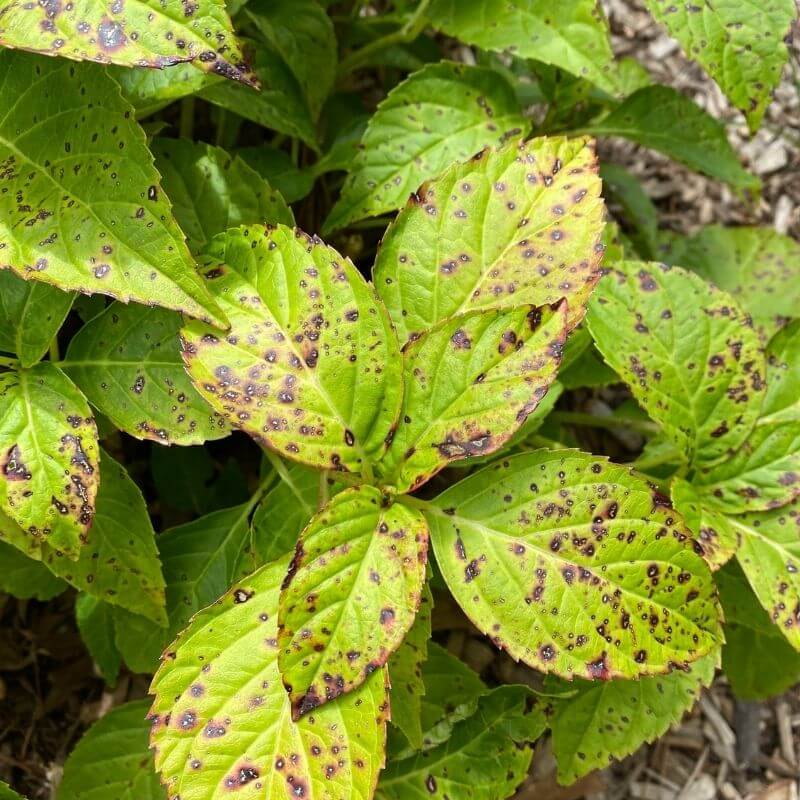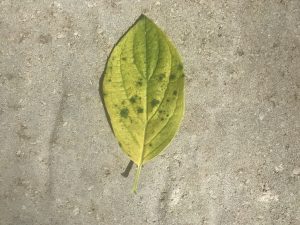Not known Facts About Hydrangea Leaves Turning Yellow
Wiki Article
The Facts About Hydrangea Leaves Turning Yellow Uncovered
Table of ContentsHydrangea Leaves Turning Yellow Things To Know Before You BuyHydrangea Leaves Turning Yellow - TruthsAbout Hydrangea Leaves Turning YellowHydrangea Leaves Turning Yellow - The Facts
One opportunity is that the plant is not obtaining enough sunlight. Throughout the cold weather, the days are much shorter, and the sun is not as intense, so see to it to put your Hydrangea in a spot where it will certainly access the very least six hours of sunlight every day. Another reason for Hydrangea yellow fallen leaves in wintertime can be as well much water.The leaves might be turning yellow due to temperature anxiety. Hydrangeas like cooler temperatures, so if the plant remains in an area that gets too hot or also chilly, the leaves will certainly turn yellow. If you assume temperature level tension could be the concern, attempt relocating your Hydrangea to a different area or safeguarding it from the components with a burlap cover.
New growth will be observed in very early spring, when you'll notice eco-friendly foliage growing from stems that may have shown up dead. Nevertheless, if your fallen leaves are turning brown in springtime or summer season, there are most likely other variables at play. The exact factors depend on the selection and their growing conditions, however as a whole, brownish hydrangea leaves are an indication of dehydration and wilting in the warmth
In the spring when the mercury stays fairly reduced, they'll do great. When points warm up over the summer season nonetheless, time invested in the early mid-day rays can cause untold damage.: Grow your hydrangeas in a place where they'll obtain sunshine in the early mornings or evenings, but not during the peak hours.
The Only Guide for Hydrangea Leaves Turning Yellow
Wilting is triggered by absence of moisture, implying there are a few great techniques to utilize to stop this from taking place. Offer your hydrangeas a healthy and balanced glug of water every couple of days when the temperature levels are climbing up high, and deal with the dirt to far better preserve dampness. After sprinkling, a bit of compost around the base of each plant must assist with this by maintaining wetness in the soil.This interrupts fungi spores from clearing up. "The Botrytis fungus flourishes in great and wet conditions, so avoid showering the entire plant when sprinkling and simply water at the roots," shares Roy Nicol, a Master Horticulturist - Hydrangea Leaves Turning Yellow. If you've missed the chance for avoidance and are managing an infection you need to get rid of all dead or seriously contaminated fallen leaves from the plant and ruin them to avoid further spread
As a basic guideline, we suggest eliminating fallen leaves when they are 50% brown or higher. While browning triggered by any reason can not be turned around, taking the restorative action explained above will encourage the plant to expand brand-new leaves so the damaged leaves either drop off normally or can be eliminated by the gardener.
Hydrangeas ought to be watered just when the top few inches of soil are completely dry, and must be provided a thorough soaking each time. Underwatered hydrangeas are most likely to have yellow, wilting, and sagging leaves. Enhance the frequency and quantity of sprinkling for your bush to assist resolve this issue. Hydrangeas prefer fairly damp (however not soaked) dirt, so provide the roots an excellent soaking and allow water to be soaked up into the soil prior to applying much more.
6 Easy Facts About Hydrangea Leaves Turning Yellow Explained
The way you take care of hydrangea leaves turning yellow depends upon the vital issue triggering the yellow fallen leaves. This can be challenging to establish, but when you do you will certainly be able to change your plant treatment accordingly to deal with the issue. As mentioned previously, a common problem with hydrangeas is vitamins and mineral shortages.Throughout the peak expanding period, you ought to water at a rate use this link of regarding 1 inch per week. If you are stressed over not properly watering your hydrangeas, there are a number of things you can do. Adding mulch to the base of the plants over the root zone assistance to control the temperature level around the hedge and preserve water in the dirt.

If it is also severe, some plants will check this site out certainly never recoup from transplant shock and will remain to decline up until they die. Minimize transplant shock by including as lots of origins as feasible when excavating up your plant to relocate. Be certain to give even more water than common in the weeks adhering to growing to aid your plant recover and expand brand-new origins.
Not known Incorrect Statements About Hydrangea Leaves Turning Yellow
To prevent spreading fungal diseases, make certain to thouroughly clean and disinfect any trimming devices before and after usage. You can attempt to purge the roots with water to get rid of excess fertlizer.
If you don't water your hydrangea plant for even more than a week, the fallen leaves will start transforming yellow. Fungal illness that attack the plants tend to reveal join the roots and the fallen leaves of the plant. One of these conditions is root rot, which makes it difficult for the plant to feed effectively.
Fallen leave place is another fungal illness that can target hydrangea. It results in the leaves turning yellow and the appearance of brownish and purple places on the leaves.
Report this wiki page